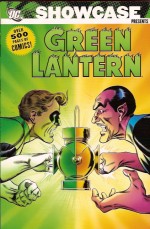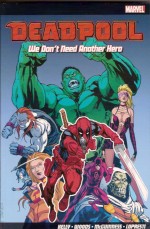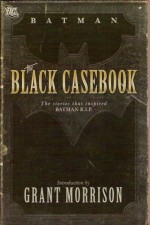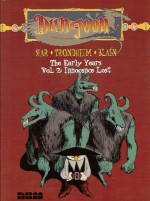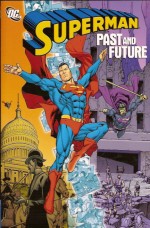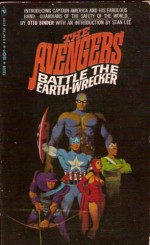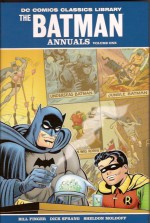
By various (DC Comics)
ISBN: 978-1-84856-215-8
¡Perfect Christmas Present Alert! – all ages
Thanks to the recent re-inclusion of the pre-“Batmania†tales into the Caped Crusader’s extensive canon, there’s a lot of 1940s and 1950s Batman material resurfacing these days in a lot of impressive formats. DC’s Classics Comics Library hardbacks are a remarkably accessible, collectible range of products and the best of them so far is this wonderful aggregation of three of the most influential and beloved comic-books of the Silver Age.
Batman Annual #1 was originally released in June 1961, a year after the startlingly successful Superman Annual #1. This big, bold anthology format was hugely popular with readers. The Man of Steel’s second Annual was rushed out before Christmas 1960 and the third came out a mere year after the first! That same month (June 1961) the first ever Secret Origins collection and the aforementioned Batman Blockbuster all arrived in shops and on newsstands.
It’s probably hard to appreciate now but these huge books – 80 pages instead of 32 – were a magical resource with a colossal impact for kids who loved comics. I don’t mean the ubiquitous scruffs, oiks and scallywags of school days who read them and chucked them away (most kids were comics consumers in the days before computer games) but rather those quiet, secretive few of us who treasured and kept them, constantly re-reading, discussing, pondering. Only posh kids with wicked parents read no comics at all: those prissy, starchy types who were beaten up by the scruffs, oiks and scallywags even more than us bookworms. But I digress…
For budding collectors the Annuals were a gateway to a fabulous lost past. Just Imagine!: adventures your heroes had from before you were even born…
Those compilations of the early 1960s changed comic publishing. Soon Marvel, Charlton and Archie were also releasing giant books of old stories, then new ones, crossovers, continued stories… Annuals proved two things to publishers: that there was a dedicated, long-term appetite for more material – and that punters were willing to pay a little bit more for it…
This vast compendium gathers the first three Batman Annuals in their mythic entirety: 21 terrific complete stories, posters, features, pin-ups, calendars and those iconic compartmentalized covers. There’re also creator biographies and articles from Michael Uslan and Richard Bruning to put the entire experience into perspective and original publication information and credits (the only bad thing about those big books of magic was never knowing “Who†and “Whereâ€â€¦)
The editors wisely packaged the Annuals as themed collections, the first being ‘1001 Secrets of Batman and Robin’ and started the ball rolling with ‘How to be the Batman’ by Bill Finger, Lew Sayre Schwartz and Stan Kaye, wherein an amnesiac Caped Crusader has to be re-trained by Robin, but as always there’s a twist in this tale, whilst ‘The Strange Costumes of Batman’ (Edmond Hamilton, Dick Sprang and Charles Paris) highlighted the specialized uniforms the heroes used in their outrageous careers.
The self-explanatory ‘Untold Tales of the Bat-Signal’ (writer unknown, Schwartz and Paris) again used past exploits to solve a contemporary case, whilst ‘The Origin of the Bat-Cave’ (Finger, Sheldon Moldoff and Paris) was only revealed by a quick time-trip back to revolutionary war era Gotham and ‘Batman’s Electronic Crime-File’ (anonymous, Sprang and Paris) is a cracking thriller that highlighted the Dynamic Duo’s love of cutting-edge technology.
‘The Thrilling Escapes of Batman and Robin’ (Finger, Moldoff and Kaye) concentrated on their facility at escaping traps and the excitement peaked in a dazzling display of ‘The Amazing Inventions of Batman’ (Hamilton, Sprang and Paris).
‘Batman and Robin’s Most Thrilling Action Roles’ began with a tension-packed mystery: ‘The Underseas Batman’ (Hamilton, Sprang and Paris), then explored the Wayne’s Scottish connections in ‘The Lord of Batmanor’ (Hamilton, with the assistance of his wife Leigh Brackett, Sprang and Paris) and again tapped into the Westerns zeitgeist with ‘Batman – Indian Chief’ (France Herron, Moldoff and Kaye).
‘The Jungle Batman’ (David Vern Reed, Schwartz and Paris) is pure escapist joy and we get a then-rare glimpse of Bruce Wayne’s training in ‘When Batman Was Robin’ (Hamilton, Sprang and Paris) before returning to foiling deathtraps with ‘Batman the Magician’ (Finger, Moldoff and Paris) and this section concludes with a pivotal tale ‘Batman – The Superman of Planet X’ (Herron, Sprang and Paris): one that forms a key thematic plank of Grant Morrison’s epic Batman R.I.P. storyline.
The third Annual (these too came far more frequently than once a year) featured ‘Batman and Robin’s Most Fantastic Foes’ beginning with ‘The Mad Hatter of Gotham City’ (Finger, Moldoff and Paris), special-effects bandit ‘The Human Firefly’ (Herron, Sprang and Paris) and hyper cerebral mutant ‘The Mental Giant of Gotham City’ (Hamilton, Sprang and Paris) before the Clown Prince of Crime stole the show with a team of skullduggery specialists in ‘The Joker’s Aces’ (Reed, Schwartz and Kaye).
Eerie and hard-hitting ‘The Gorilla Boss of Gotham City‘ (Reed, Schwartz and Kaye) was one of DC’s earliest Ape epics, and although the gripping ‘The New Crimes of Two-Face’ (Finger, Schwartz and Paris) starred a stand-in for the double-dealing psychopath the ‘The Mysterious Mirror Man’ (Finger, Moldoff and Paris) was the genuine article and well worth a modern do-over.
For me Christmas is inextricably linked to Batman. From my earliest formative years every Yule was capped by that year’s British hardcover annual, often reprints of the US comics (somewhat imaginatively coloured) but occasionally all-new prose stories liberally illustrated and based slavishly on the Adam West/Burt Ward TV series.
As I grew older and became a more serious reader and collector (the technical term is, I believe, addict) I became an avid appreciator of the regular seasonal tales that appeared in Batman or Detective Comics and the “golden Age Classics†that too infrequently graced them. Over the decades some of Batman’s very best adventures have occurred in the “Season of Good will†and why DC has never produced a Batman Christmas Album is a mystery even the World’s Greatest Detective could not solve…
This book might not actually contain any X-Mas Exploits but it is the kind of present I would have killed or died for all those hundreds of years ago, so how can you possibly deny your kids the delights of this incredibly enjoyable book? And just like Train Sets, Scalextric and Quad Bikes when I say kids of course I mean “Dadsâ€â€¦
© 1961, 1962, 2009 DC Comics. All Rights Reserved.


